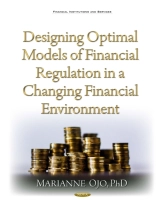As well as highlighting how corporations and enterprises – national or multinational – can be effectively engaged in entrepreneurship and innovation as a means of fulfilling corporate social responsibility goals and objectives, this book aims to propose means whereby auditors (and particularly, external auditors) could more effectively fulfil corporate governance roles through implementation of local, regional, national and internationally recognized codes, regulations, and standards. Whether it is advantageous to regulate both securities investments and consumer financial instruments through a single entity (as is accomplished by the Financial Conduct Authority in the United Kingdom), or through various specialized agencies (as is accomplished in the United States through the Securities and Exchange Commission and the Consumer Financial Protection Bureau) depends on the structure of the "single entity" and whether such an entity is still working as part of a larger entity whose effectiveness is primarily determined by the extent and level of coordination and cooperation with other entities in the supervisory process. As the tripartite arrangement between the Financial Services Authority, Bank of England and the Treasury has revealed, even well-designed regulatory structures are prone to flaws and shortcomings, where resources are inadequately allocated and where the necessary level of communication and coordination is lacking. The structure of financial regulation is hence not only crucial to the success of the attainment of regulatory objectives, but also the extent of involvement, coordination, and cooperation between involved supervisory authorities. Further, the allocation of appropriate tools and resources to those authorities who are best endowed, equipped with the expertise to carry out the required level of monitoring and supervision, as well as clear allocation of such responsibilities, would ensure resources of time and expertise are not wasted, and that responsibilities are not duplicated. As well as highlighting the impact of asymmetric information on levels of monitoring procedures and how conflicts of interests could arise between corporations and their shareholders or between governments and the firms being regulated by the regulator, this book also aims at accentuating the need for the operation of certain vital safeguards, given the merits that are and could be derived from self-governance and self-regulation. Several safeguards that are aimed at bolstering the agent’s objectives and actions are closely monitored, as well as aligned with firm investors‘ desires, encompass and relate to the encouragement of longer term firm economic performance. This also includes increasing shareholder voting power, and the implementation of legislative tools and financial reporting standards as means of determining how effectively executives and management are to be compensated. Finally, this book is also aimed at exploring how these safeguards could be applied, particularly within the context of insider trading and the rationale behind several jurisdictions to adopt or not adopt insider trading regulations. The author seeks to provide the readers with a better understanding of how corporate governance structures can assist businesses.
Format PDF ● Seiten 252 ● ISBN 9781634848435 ● Herausgeber Marianne Ojo ● Verlag Nova Science Publishers ● Erscheinungsjahr 2016 ● herunterladbar 3 mal ● Währung EUR ● ID 7229235 ● Kopierschutz Adobe DRM
erfordert DRM-fähige Lesetechnologie












